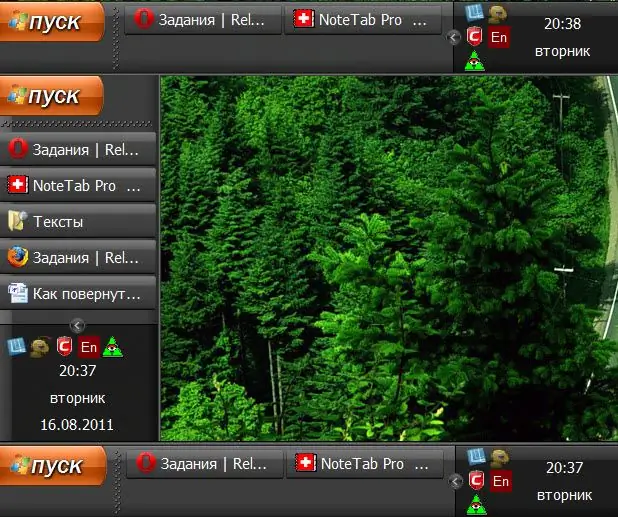On the left side of the Windows OS taskbar there is a button for accessing the main menu of the system ("Start") and a quick launch bar, and on the right - the notification area ("tray") and the clock. Between them, the currently open application windows and additional panels added by the owner are displayed. Everyone who works in the system is sure to use at least something of all this wealth. And since everyone has different tastes, the manufacturer has provided the ability to change the appearance of the taskbar, its position on the screen and size.

Instructions
Step 1
Right-click a free space on the taskbar. Make sure that there is no check mark next to the item "Dock the taskbar" in the drop-down context menu. If it is there, click this item. This will unlock the panel and make it possible to move it.
Step 2
Click again the free space of this panel with the mouse, but this time use the left button. Without releasing the buttons, drag the panel to the desired edge of the screen. You will not see the movement itself until the cursor is close enough to the edge, and then the panel, along with everything placed on it, will "jump" to a new place. Then release the left mouse button.
Step 3
Adjust the width of the panel to match its new orientation - items placed on the vertical stripe look different than on the horizontal stripe. For example, the inscriptions on the narrow and tall buttons of the programs are not so convenient to read as on the horizontally elongated buttons, but they fit more. To change the width of the taskbar, move the mouse cursor over its border and when the cursor icon from the arrowhead becomes a double-headed arrow, press the left button. Without releasing the buttons, move the border to the desired panel width.
Step 4
Use the option to automatically hide the taskbar if its dimensions are too large after adjusting the width. If you use this mechanism, then the panel will appear only when you move the cursor to the edge of the screen, and the rest of the time it will be invisible. To enable this mechanism, right-click the free space of the panel again and select the "Properties" line from the context menu. In the window that opens, check the box "Automatically hide the taskbar" and click the "OK" button.
Step 5
Fix the new position of the panel after all the settings for its appearance have been made - by clicking the edits of the mouse button on the panel, open the context menu and select the "Dock taskbar" item in it.






